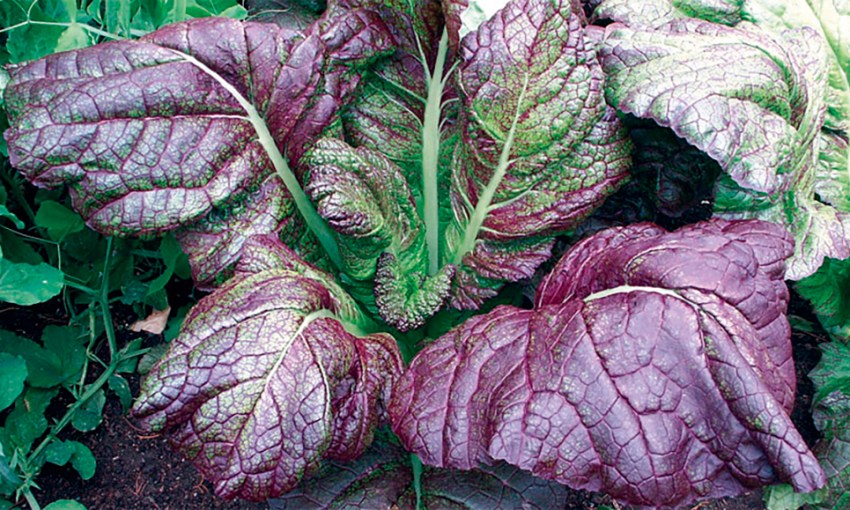Mustard greens add a pungent, mustardy taste to salads that complements other cooler flavours, and they are an extremely quick and easy crop to grow.
In the garden: Grow some mustard greens
Mustard has been used since prehistoric times and during the first century AD, Pliny the Roman author of the book Natural History listed 40 remedies using mustard as a main ingredient. The Romans named this herb from “mustus”, a new wine they had made from the seed of the plant.
Mustard greens belong to the Brassicaceae or Cruciferae family which is a medium-sized, yet important, family of flowering plants with more than 350 genera and more than 4000 accepted species. While not as hardy as kale and collards they are extremely nutritious, flavoursome and perfect for growing in the garden or in containers. They make excellent companions for autumn flowers, but you do need to water them regularly so it is important to grow them with plants of similar watering requirements such as pansies.
IN THE GARDEN
Mustard greens are best planted by seed in rich, moist soil in a sunny spot or dappled shade. If planted in hot sun they can bolt and go to seed too quickly. Before planting the seeds or seedlings, enrich the soil by digging in lots of aged animal manure or compost from your heap. Turn the soil with a digging fork to ensure it’s evenly spread and water the area well before planting. Keep the area weed-free while the seedlings are small; the less competition they have the better they will grow.
Keep the young plants well-watered at all times to prevent a bitter taste developing. Fertilise with an organic balanced fertiliser but, as they are a quick crop, you may find if they are planted in good rich soil, no fertiliser will be required.
Mustard greens do tolerate mild frosts but can succumb to heavy frosts so, if growing in a container, keep an eye on the forecast and shift them to a more sheltered spot if necessary.
There are not many problems relating to pests and diseases with this plant, although they can attract cabbage moth. If so, the plants can be sprayed with an organic pyrethrum spray as necessary. When the plant is mature, the seeds that set from the small yellow flowers can be collected for storage in a dry place until you are ready to replant them.
IN THE KITCHEN
Harvest the leaves while they are still young and tender as the older ones can become tough and even bitter. Discard any yellowing leaves as they appear on the plant. You can pick either individual leaves or harvest the entire plant to use in cooking for flavour or for salads.
The giant red mustard lettuce, available as seed from the Diggers Shop, is a variety with deep burgundy-coloured leaves, extremely hot to taste, but perfect in a cool green salad. It’s a plant well worth trying in your garden, after all, it has been proclaimed by many nutritionists as the world’s healthiest plant.
This story first appeared in the Autumn issue of SALIFE Gardens & Outdoor Living magazine.



